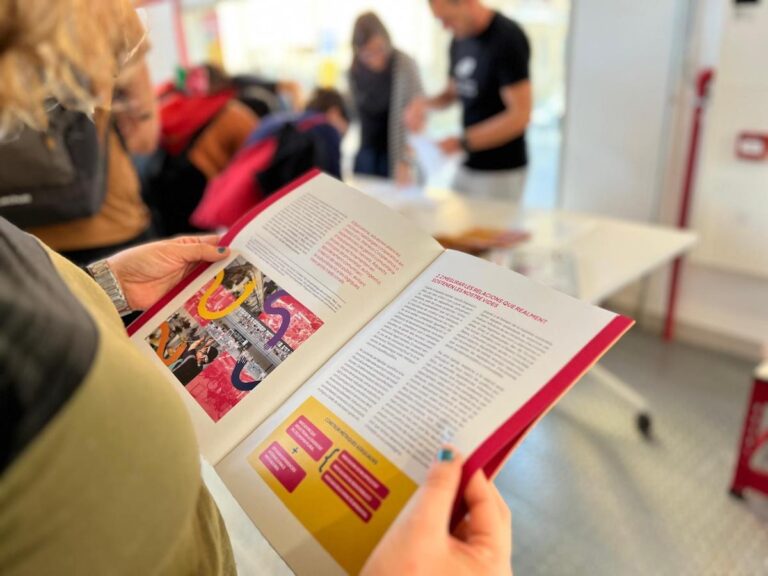A woman reads a report from the Kopolis Observatory at the International Conference on Plural Economics. (Copolis Barcelona)
Why do we need new indicators beyond the traditional gross domestic product (GDP) to measure the economy? These are questions that we aim to answer by quantifying and evaluating them. All this is expressed in a “plural economy” that replaces the traditional capitalist model based on reciprocity, redistribution and exchange.
The Kopolis Observatory, in collaboration with researchers from the Autonomous University of Barcelona and the University of Leeds, has published a report called “The Hidden Economics of GDP”. A first approach to measuring multiple economies. It analyzes the impact of activities that support social and environmental well-being but are not reflected in GDP calculations.
Mauro Castro, a member of the Copolis Observatory and the Barcelona Institute for Urban Research (IDRA), explained this at the International Conference on Plural Economies: An economy that takes into account North-South relations, an economy of common goods, an economy of social and solidarity that generates relationships that are not based solely on local interests…given a private and commercial vision of which capital is one; Plan our future. Castro is one of the authors of the Kopolis Observatory study, along with Bertie Russell (UAB) and Sara Gonzalez (University of Leeds).
The researchers explain in the report that unpaid caregiving accounts for 70-80% of global GDP, while “ecosystem services” account for over 200% of global GDP. . All of these could be included in what the Kopolis Observatory defines as a “plural economy,” which is also one of the points discussed in the study. Based on the contributions of Austro-Hungarian economist and anthropologist Karl Polanyi, this work offers an alternative to traditional capitalist models that exist in societies that are “often invisible or subordinate to the logic of the market.” Explore forms of reciprocity and distribution.
Mauro Castro, one of the study authors, at the International Conference on Pluralistic Economies. (Copolis Barcelona)
An example of this is the issues of care and social reproduction that feminism has recently put on the table. “This unpaid work is essential to the sustainability of society, yet it is not reflected in traditional economic indicators such as GDP,” the report highlights. In this sense, we believe it is necessary to develop new indicators to “evaluate and quantify social benefits” that visualize contributions to the community and volunteer activities.
To alleviate these shortcomings, the authors propose several alternatives to GDP, such as the Gross National Happiness Index for Bhutan. It is a tool to assess and guide the development of public policy, from traditional socio-economic areas such as health and education, to less traditional aspects such as, in this case, psychological well-being and culture.
Scotland, Catalonia, Euskal Geria
The chapter “Mesurant les transitions cap a economies del benestar” (“Measuring transitions to welfare economies”) “Develops scales and frameworks to assess the transformative impact of initiatives that want to promote post-growth societies and well-being.” It emphasizes the importance of economy,” such as building community wealth in Scotland and the social solidarity economy in Catalonia.
In the case of Scotland, they explain, community wealth building (CWB) projects have already been proposed that aim to “increase assets under collective social control” towards a welfare economy. Examples of a “social and sustainable economy” in Barcelona through collaboration between public institutions, cooperatives, and community actors include cooperative housing in the transfer of uses, and the experience of Ateneus cooperatives and community management. Facilities and services. “These projects are based on the principles of proximity, self-management, community empowerment and public value creation, and avoid subordination to traditional commercial logics,” they comment.
There are many examples of self-management and community action in Euskal Geria, from the Basque town of Gazteche to the Gasteiz district of Erekareol, one of the most important subsistence experiences in Europe. Similarly, the organization of Aste Nagusia de Bilbo is also noteworthy thanks to the voluntary work of thousands of comparseros and collaborators.


